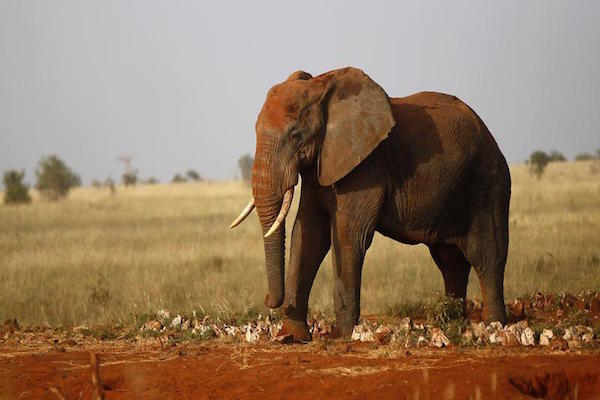China Destroys Hundreds of Kilos of Confiscated Ivory in Beijing, Vows to Stop Poaching
| Camille Harthy | | May 29, 2015 12:25 PM EDT |
(Photo : Reuters) Chinese authorities have destroyed about 662kg of smuggled ivory as the country seeks to reaffirm its commitment to combating poaching and the illegal but lucrative trade in ivory.
China authorities have vowed to put an end to illegal ivory poaching in the country, and it showed commitment to this cause by publicly crushing 662 kilograms of confiscated ivory and ivory products.
State Forestry Administration Head Zhao Shucong said at an event in the nation's capital that it is the country's goal to eradicate the illegal processing and selling of ivory from elephants, The Guardian reported.
Like Us on Facebook
To achieve this end, Zhao said the ivory trade in China will be "strictly" controlled. This move follows a one-year ivory import ban that was unveiled in February. China is reportedly also in a talks with the U.S. to tackle this issue.
China's commitment, as well as the ceremony where smuggled ivory and ivory products were placed on a conveyor belt that smashed them into pebbles, was applauded by conservationists.
World Wide Fund China CEO Lo Szee Ping noted that the announcement is expected to have a "profound impact" on the conservation of wild elephants and stopping of ivory trafficking.
Meanwhile, WildAid executive director, Peter Knights, also supported China's new anti-poaching initiative. He described it as "the greatest single measure" that could reduce the illegal trade in Africa.
Knights added that 95 percent of surveyed respondents in China said that they support an ivory ban. The 2014 survey also revealed that 51.5 percent of the participants considered elephant poaching as a problem in the country.
According to The Guardian, China and the U.S. are believed to be the biggest market for ivory products.
Citing a study by Colorado State University, National Geographic said that from 2010 to 2012, around 100,000 elephants in Africa were killed, all for poachers' pursuit of ivory. The study also said that the number of elephants in central Africa fell by 64 percent in 10 years.
It is believed that in 1979, there were 1.3 million African elephants. In 2007, the numbers went down to as low as 472,000.
Despite China's renewed commitment to the cause, the fight against poaching and preserving ecological balance by saving elephants has a long way to go. Aside from China, other Asian countries known to participate in this illegal trade include the Philippines, Thailand, and Japan.
TagsIvory trade, illegal ivory trade, china Operation Guardian, illegal elephant tusks, elephants
©2015 Chinatopix All rights reserved. Do not reproduce without permission
EDITOR'S PICKS
-

Did the Trump administration just announce plans for a trade war with ‘hostile’ China and Russia?
-

US Senate passes Taiwan travel bill slammed by China
-

As Yan Sihong’s family grieves, here are other Chinese students who went missing abroad. Some have never been found
-

Beijing blasts Western critics who ‘smear China’ with the term sharp power
-

China Envoy Seeks to Defuse Tensions With U.S. as a Trade War Brews
-

Singapore's Deputy PM Provides Bitcoin Vote of Confidence Amid China's Blanket Bans
-

China warns investors over risks in overseas virtual currency trading
-

Chinese government most trustworthy: survey
-

Kashima Antlers On Course For Back-To-Back Titles
MOST POPULAR
LATEST NEWS
Zhou Yongkang: China's Former Security Chief Sentenced to Life in Prison

China's former Chief of the Ministry of Public Security, Zhou Yongkang, has been given a life sentence after he was found guilty of abusing his office, bribery and deliberately ... Full Article
TRENDING STORY

China Pork Prices Expected to Stabilize As The Supplies Recover

Elephone P9000 Smartphone is now on Sale on Amazon India

There's a Big Chance Cliffhangers Won't Still Be Resolved When Grey's Anatomy Season 13 Returns

Supreme Court Ruled on Samsung vs Apple Dispute for Patent Infringement

Microsoft Surface Pro 5 Rumors and Release Date: What is the Latest?










